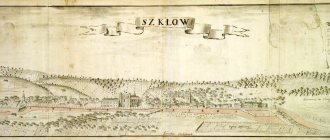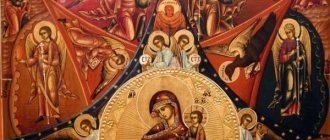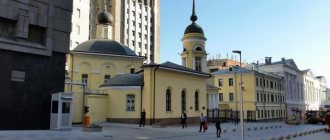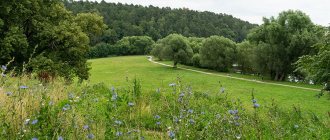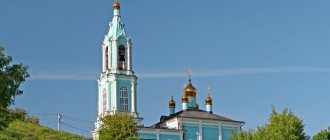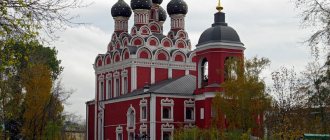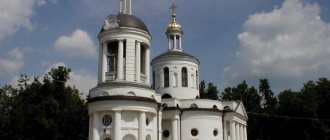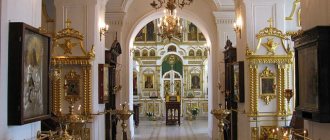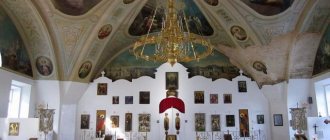Mir
Russia Moscow Temple of the Vladimir Icon of the Mother of God in Kurkino (Moscow) Map is loading…
{"format":"leaflet","minzoom":false,"maxzoom":false,"limit":50,"offset":0,"link":"all","sort":[""], "order":[],"headers":"show","mainlabel":"","intro":"","outro":"","searchlabel":"\u2026 \u0441\u043b\u0435\ u0434\u0443\u044e\u0449\u0438\u0435 \u0440\u0435\u0437\u0443\u043b\u044c\u0442\u0430\u0442\u044b","default":"","import-annotation":false,"width ":"auto","height":"350px","centre":{"text":"","title":"""link":"""lat":55.88970830000000233894752454943954944610595703125,"lon": 37.38037779999999798974386067129671573638916015625,"icon":""},"title":"","label":"","icon":"","lines":[],"polygons":[],"circles":[ ],"rectangles":[],"copycoords":false,"static":false,"zoom":8,"defzoom":14,"layers":["OpenStreetMap"],"image layers":[] ,"overlays":[],"resizable":false,"fullscreen":true,"scrollwheelzoom":true,"cluster":false,"clustermaxzoom":9,"clusterzoomonclick":true,"clustermaxradius":80, "clusterspiderfy":true,"geojson":"","clicktarget":"","showtitle":true,"hidenamespace":false,"template":"","userparam":"","activeicon": "","pagelabel":false,"ajaxcoordproperty":"","ajaxquery":"","locations":[{"text":"\u003Cb\u003E\u003Ca href=\"/palomnik/%D0% A5%D1%80%D0%B0%D0%BC_%D0%92%D0%BB%D0%B0%D0%B4%D0%B8%D0%BC%D0%B8%D1%80%D1%81% D0%BA%D0%BE%D0%B9_%D0%B8%D0%BA%D0%BE%D0%BD%D1%8B_%D0%91%D0%BE%D0%B6%D0%B8%D0% B5%D0%B9_%D0%9C%D0%B0%D1%82%D0%B5%D1%80%D0%B8_%D0%B2_%D0%9A%D1%83%D1%80%D0%BA% D0%B8%D0%BD%D0%B5_(%D0%9C%D0%BE%D1%81%D0%BA%D0%B2%D0%B0)\» title=\»\u0425\u0440\u0430\ u043c \u0412\u043b\u0430\u0434\u0438\u043c\u0438\u0440\u0441\u043a\u043e\u0439 \u0438\u043a\u043e\u043d\u044b \u0411\u043e\u 0436\u0438\u0435\u0439\u041c\ u0430\u0442\u0435\u0440\u0438 \u0432 \u041a\u0443\u0440\u043a\u0438\u043d\u0435 (\u041c\u043e\u0441\u043a\u0432\u0430)\u003 E\u0425\u0440\u0430\ u043c \u0412\u043b\u0430\u0434\u0438\u043c\u0438\u0440\u0441\u043a\u043e\u0439 \u0438\u043a\u043e\u043d\u044b \u0411\u043e\u 0436\u0438\u0435\u0439\u041c\ u0430\u0442\u0435\u0440\u0438 \u0432 \u041a\u0443\u0440\u043a\u0438\u043d\u0435 (\u041c\u043e\u0441\u043a\u0432\u0430)\u003C/ a\u003E\u003C/b\ u003E\u003Chr /\u003E\u003Ca href=\»/palomnik/%D0%A1%D0%B2%D0%BE%D0%B9%D1%81%D1%82%D0%B2%D0%BE:%D0 %90%D0%BD%D0%BD%D0%BE%D1%82%D0%B0%D1%86%D0%B8%D1%8F\" title=\"\u0421\u0432\u043e\u0439\u0441 \u0442\u0432\u043e:\u0410\u043d\u043d\u043e\u0442\u0430\u0446\u0438\u044f\»\u003E\u0410\u043d\u043d\u043e\u0442\u0430\u0446 \u0438\u044f\u003C/ a\u003E: "'\u0425\u0440\u0430\u043c \u0412\u043b\u0430\u0434\u0438\u043c\u0438\u0440\u0441\u043a\u043e\u0439 \u0438\u043a\u0 43e\u043d\u044b\u0411 \u043e\u0436\u0438\u0435\u0439 \u041c\u0430\u0442\u0435\u0440\u0438 \u0432 \u041a\u0443\u0440\u043a\u0438\u043d\u0435"' \u2 014\u043f\u0440\u0430\u0432 \u043e\u0441\u043b\u0430\u0432\u043d\u044b\u0439 \u0445\u0440\u0430\u043c, \u043f\u0440\u0438\u043d\u0430\u0434\u043b\u0435 \u0436\u0430\u0449\u0438\ u0439 \u043a \u0421\u043f\u0430\u0441\u0441\u043a\u043e\u043c\u0443 \u0431\u043b\u0430\u0433\u043e\u0447\u0438\u043d\u0438\u 044e\u0420\u0443\u0441\u0441\ u043a\u043e\u0439 \u041f\u0440\u0430\u0432\u043e\u0441\u043b\u0430\u0432\u043d\u043e\u0439 \u0426\u0435\u0440\u043a\u0432\u0 438.","title":"\ u0425\u0440\u0430\u043c \u0412\u043b\u0430\u0434\u0438\u043c\u0438\u0440\u0441\u043a\u043e\u0439 \u0438\u043a\u043e\u043d\u0 44b\u0411\u043e\u0436\u0438\ u0435\u0439 \u041c\u0430\u0442\u0435\u0440\u0438 \u0432 \u041a\u0443\u0440\u043a\u0438\u043d\u0435 (\u041c\u043e\u0441\u043a\ u0432\u0430)","link" :"","lat":55.88970830000000233894752454943954944610595703125,"lon":37.38037779999999798974386067129671573638916015625,"icon":""}]" imageLayers":[]}
55.88975; 37.380435
Russia, Moscow, Novogorskaya street, 37с1
Moscow
Russia
Phones:
Telephone:
8-495-572-34-31
Temple of the Vladimir Icon of the Mother of God in Kurkino
- an Orthodox church belonging to the Spassky deanery of the Russian Orthodox Church.
History[edit]
The village of Kurkino has been known for more than 500 years, but a single-throne church appeared in it only in 1678, when Prince Ivan Vorotynsky was establishing his estate in the village. The temple was three-domed, with a bell tower and a refectory, in which two chapels were organized, one in the name of St. Nicholas the Wonderworker, the second in the name of St. Sergius of Radonezh. Tomb of the Zakharyins
By 1743, the church had become dilapidated and required urgent repairs, money for which was allocated only in 1760. There is an assumption that it was during this renovation that the appearance of the church began to change significantly; only one of the three domes was left, the aisles were abolished and some of the decorative decoration was removed. The temple acquired its modern appearance during reconstruction, which began in 1840. The church received new facades, the old dilapidated bell tower was dismantled and a new, four-tiered one was built in its place, and a warm room was organized in the basement in the name of St. Nicholas the Wonderworker. Perestroika ended in 1846.
The surrounding landowners also provided assistance in renovating the temple, including the family of the famous general practitioner Grigory Antonovich Zakharyin, after whose death a family chapel-crypt was built next to the church. The design of the chapel was carried out by Fyodor Shekhtel, and the sketches of the mosaic decoration were created by Viktor Vasnetsov.
The temple operated until 1938, after which it was closed due to the lack of clergy. At the same time, no official documents were issued about the closure of the temple, which made it possible to completely preserve both the decoration of the temple and church items; only valuables were confiscated. Services in the temple resumed in July 1946. Since then the temple has not been closed.
Temple of the Vladimir Icon of the Mother of God in Kurkino
Story
The village of Kurkino arose over five hundred years ago and is mentioned in the chronicles of Grand Duke Ivan Kalita at the beginning of the 15th century.
The local villages were owned by the boyar Ivan Kvashnya, who during the Battle of Kulikovo was one of the governors of Dmitry Donskoy and commanded the Kolomna regiment. Previously, the village was called “Konstantinovskoye, Kuritsyno, also, on the Vskhodna River.” It is possible that the village received the name “Kuritsyno” (later Kurkino) from its owner, Duma clerk Fyodor Vasilyevich Kuritsyn, who lived in the second half of the 15th century. He was a prominent political figure, widely educated, an outstanding diplomat, who had a great influence on the foreign policy of the Russian state under Ivan III. In the list of Duma officials compiled in 1497, F.V. Kuritsyn is named third among the clerks, but since 1500 information about him has disappeared. He may have been persecuted and punished for creating a Moscow circle of “heretics,” like his brother, Ivan Volk Kuritsyn, who was burned in a cage as a heretic in 1504.
In the first half of the 17th century. The village of Kurkino belonged to two owners. One half of the village with the lands adjacent to it constituted the patrimony of Prince Ivan Ivanovich Odoevsky, who bought it in 1617 from his daughter-in-law. The other half of the village, initially listed as belonging to Plakida Myakinin, was sold by him to Timofey Boborykin in 1622. In 1639-1641. The village of Kurkino was bought by Prince Alexey Ivanovich Vorotynsky, a boyar and governor, who was related to Tsar Mikhail Romanov thanks to his marriage to Maria Streshneva, the sister of Queen Evdokia. After the boyar in 1642, Kurkino and the village of Barashki (formerly a wasteland on the Melenka stream) came into the possession of his son, Prince Ivan Alekseevich Vorotynsky, who was a cousin of Tsar Alexei Mikhailovich, participated in all his campaigns and held the high position of boyar and butler.
Around 1672-1678 At the expense of I. A. Vorotynsky, a stone church was built in Kurkino in the name of the Vladimir Icon of the Blessed Virgin Mary. A drawing from this time, next to the stone church, shows a vast estate with a three-story boyar's house, human and service buildings along the fence. In 1678, in the village there were 22 households of grooms, huntsmen, falconers, stokers and 14 peasant households, in which 48 people lived.
After the death of I. A. Vorotynsky, the princely family in the male line was cut short, and the estate went to his widow, Princess Nastasya Lvovna. N.L. Vorotynskaya in 1691 exchanged the village of Kurkino and the village of Barashki to Patriarch Adrian. The latter sent the princess “an image of the Most Pure Mother of God of Vladimir, a salary and a crown” in gratitude for the fact that she “gave up the village and the village to the house of the Most Pure Mother of God and the Most Holy Patriarch.”
However, very soon the village lost its former significance. Tsar Peter I, who did not tolerate resistance to his reforms from the Church, after the death of Adrian in 1700, did not allow the election of a new patriarch, appointing with his own will a “locum tenens of the patriarchal throne.” He placed a state body, the Holy Synod, at the head of the Church, and all the patriarch’s estates were transferred to the Synodal Department, under the control of government officials. The rich estate, which previously served as a place of rest and entertainment for the eminent owner, disappeared; there were no huntsmen or falconers. In 1704, 36 peasant households were recorded in Kurkino and Barashki, in which 115 peasants lived. The church clergy has also been reduced - only the courtyards of the priest Ivan Dmitriev and the sexton Fyodor Ivanov are marked at the church.
In the middle of the 18th century. The Kurka church fell into disrepair. Local priests Grigory Grigoriev and Ivan Fedorov (since 1757) many times made requests for its repair to the Synodal Economic Board. Funds for this were released in 1760, and subsequently the “renewal and repair” of the church was carried out. As a result of these works, the main volume of the temple was preserved, but the porch and porch were lost. The original architectural treatment has been preserved only on the eastern wall, on the apse side, and on the light drum of the church. The interior decoration of the temple also dates back to the 18th century. The bell tower at the Kurkin church was erected in the 1840s. In addition to Kurkin, the parish of the Vladimir Church included the villages of Barashki, Kobylya Luzha, Mashkino, Filino and Yurovo.
In September 1872, the society of peasants in the village of Kurkina sold 30 acres of land from its allotment to Grigory Anatolyevich Zakharyin. An outstanding Russian general practitioner, founder of the Moscow clinical school, professor and director of the Moscow University therapeutic clinic, G. A. Zakharyin was an honorary member of the St. Petersburg Academy of Sciences (since 1885). He often came to his estate, built near Kurkin in the valley of the Skhodny River, lived here for a long time, communicated with local peasants, helped the poor with bread and money, and made contributions to the Kurkin church.
The Zakharins took part in the renovation in 1892, and a stone fence was built at their expense. In 1898, the Temperance Society was opened, and in 1899 - a parochial school.
On the initiative of G. A. Zakharyin’s daughter P. G. Podgoretskaya, a family chapel was built in Kurkino near the Vladimir Church in 1899 according to the design of the famous architect F. O. Shekhtel. The mosaic panel inside the chapel is laid out according to a drawing by V. M. Vasnetsov. G. A. Zakharyin, and then his wife E. P. Zakharyin and son S. G. Zakharyin were buried in this chapel.
During the years of the revolution and civil war, the temple was not closed, but church valuables were confiscated. Divine services were held in the temple until 1938, when the temple was closed and turned into a warehouse. There was no official decree from the authorities on the closure, and the church community preserved the interior of the temple. Every year since 1943, believers turned to the authorities with a request to open a parish, and in 1946 the request was granted. In 1947 the church was reopened.
For the 1000th anniversary of the Baptism of Rus' in 1988, the outside walls of the Vladimir Church were plastered, the paintings on the walls and vaults inside were washed, the iconostasis was painted, and the lost carving elements were restored.
On June 3, 1992, on the feast of the Vladimir Icon of the Mother of God, a Patriarchal service took place in the church, just like 300 years ago. After this, His Holiness Patriarch Alexy II annually celebrated the Liturgy in the church on July 6, the day of the temple holiday, in the period from 93 to 95.
Current state[edit]
Interior The
area surrounding the temple is occupied by a cemetery.
Activities of the parish:
The church has a school for children and adults, a library, a singing club, and provides charitable assistance.
Phones:
Adm. Vladimirskaya"
— September 8, July 6, June 3
Nicholas the Wonderworker, Archbishop of Myra, Saint
— May 22, December 19
Sergius of Radonezh, Venerable
— Cathedral of Moscow Saints, July 18, October 8
History of construction
The church in the village of Kurkino appeared in 1678, although the settlement existed, according to historical information, from the beginning of the 15th century. The construction of the temple is associated with the name of Prince Ivan Vorotynsky, who at that time was establishing his estate in the village.
Temple of the Vladimir Icon of the Mother of God in Kurkino
- The building was three-domed, with a refectory and a bell tower adjacent to it. Two chapels were organized in the church - in honor of St. Nicholas the Wonderworker and Sergius of Radonezh.
- In less than a hundred years of its existence, the temple fell into disrepair. Funds for repairs were required, but they were found only in 1760. Historians suggest that it was from this moment that the appearance of the temple began to change. One dome was left on it, the decorative elements were partially removed, and the side chapels were abolished. From 1840 to 1846, another restructuring was carried out. As a result, the facade was repaired, the old bell tower was dismantled in order to erect a new, four-tiered one in its place. In the basement they made a chapel to St. Nicholas the Wonderworker.
- Many landowners from the area provided assistance in rebuilding the church. Among them was the family of the famous doctor Grigory Antonovich Zakharyin. Over time, a chapel-crypt of their family was built near the temple, the architectural plan of which was developed by F. Shekhtel, and the sketches of the mosaics were designed by V. Vasnetsov.
- The parish was closed in 1938. The reason for this was the absence of a clergyman. There have been no official statements about the temple. All the furnishings were preserved, the utensils remained, only valuables were confiscated.
Beginning in 1946, the temple was reopened and never closed again.
How to get there[edit]
Address:
125466, Russia, Moscow, st. Novogorskaya, 37
Telephone:
8-495-572-34-31
Email address mail:
Directions:
- m. "Rechnoy Vokzal", then bus. 343 to the stop “Zakharyinskaya street” metro station “Planernaya”, then bus. 268 to the stop “7th microdistrict Kurkina”; minibus 980 and 981 to the Vladimirskaya Church stop (on request).
- "Skhodnenskaya" metro station, hereinafter ed. 212 to the stop “st. Lily of the valley."
- Khimki station, then bus. 27 to the stop “Zakharyinskaya street”.
Russian Orthodox ChurchFinancial and economic management
Object of cultural heritage of federal significance “Vladimir Church, 1672”
Address: Moscow, Kurkino district, st. Novogorskaya, 37, building 1
Rector: Priest Igor Konstantinov
Contractor: NP "Unified Customer Service of the Moscow Patriarchate" (2018) Contractor: LLC "Architectural and Restoration Workshop ARKADA - NT" (2017-2016)
Technical supervision: ANO "National Restoration Center for Promoting the Preservation of Cultural Heritage Objects" (2018) Technical supervision: NP "Unified Customer Service of the Moscow Patriarchate" (2017-2016)
Author's supervision: NP "Unified Customer Service of the Moscow Patriarchate" (2018) Author's supervision: LLC "Architectural and Restoration Workshop ARKADA - NT" (2017-2016)
Temple website: www.hram-kurkino.ru
RESTORATION
In 2021: restoration of the brickwork of the facades of the temple and bell tower, restoration of the white stone masonry of the basement and decoration of the facades of the temple were carried out. Then the facades of the temple and the bell tower were repainted. These works began in 2015.
In 2021: restoration of the interiors and cross of the bell tower was carried out, restoration of the drainage system and storm sewer system, including gutters with roofing, repair of the blind area, restoration of sidewalk coverings and platforms.
In 2021: work was completed to repair the roof of the altar and refectory parts of the temple with the installation of steam and thermal insulation, the end was restored, the dome cross was gilded, and a drainage system was installed.
Story
On a hill, near the Skhodnya River, there is a beautiful church ensemble consisting of an ancient stone church, a bell tower from the late classicism era and a Romanesque chapel, built according to the design of the outstanding modern architect Fyodor Shekhtel.
The church was built by the owner of the village, boyar, Prince Ivan Alekseevich Vorotynsky in 1672-1678. Named after the church of the same name (not preserved) in Kitay-Gorod on Nikolskaya Street, not far from the Vorotynskys’ property. The church was single-altar, three-domed, with a stone bell tower and connected by a covered passage with the princely mansions.
Architecture: a two-story quadrangle on a high basement with three pillars, crowned with three domes. The refectory and bell tower adjoin the quadrangle. The decoration of the temple was a nine-tiered iconostasis.
In 1691 A.L. Vorotynskaya transferred the village to the Moscow Bishop's House. In gratitude, Patriarch Adrian sent the owner the Vladimir Icon of the Mother of God. In the 1760s, the temple was rebuilt: the side chapels in the refectory were abolished, two domes were removed, and the kokoshniks were removed.
Significant restructuring of the external appearance dates back to 1846-1850, when instead of a small ancient bell tower, a high three-tiered one was erected, the front porch was dismantled, and a warm St. Nicholas chapel was built in the basement part of the temple.
In 1872, the famous Moscow doctor G.A. settled in the village of Kurkino. Zakharyin. The wealthy Zakharyin family allocated a lot of money to charity. The Zakharins took part in the renovation in 1892, and a stone fence was built at their expense. In 1898, the Temperance Society was opened, and in 1899, a parochial school. Two years after the death of G.A. Zakharyin's widow and daughter commissioned the famous architect F.O. Shekhtel’s project for a family chapel-crypt with a mosaic of the Crucified Savior, made in Italy according to a sketch by V.M. Vasnetsova. In 1907-08, the chapel-tomb was completed.
***
During the years of the revolution and civil war, the temple was not closed, but church valuables were confiscated. Divine services were held until 1938, when the temple was turned into a warehouse. There was no official government decree on closure, and the church community preserved the interior decoration. Every year since 1943, believers turned to the authorities with a request to open a parish, and in 1946 the request was granted. In 1947 the church was reopened.
***
For the 1000th anniversary of the Baptism of Rus' in 1988, the outside walls of the Vladimir Church were plastered, the paintings on the walls and vaults were washed inside, the iconostasis was painted, and the lost carving elements were restored.
On June 3, 1992, on the feast of the Vladimir Icon of the Mother of God, a Patriarchal service took place in the church, just like 300 years ago.
AllTemple of the Vladimir Icon of the Mother of God in Kurkino

